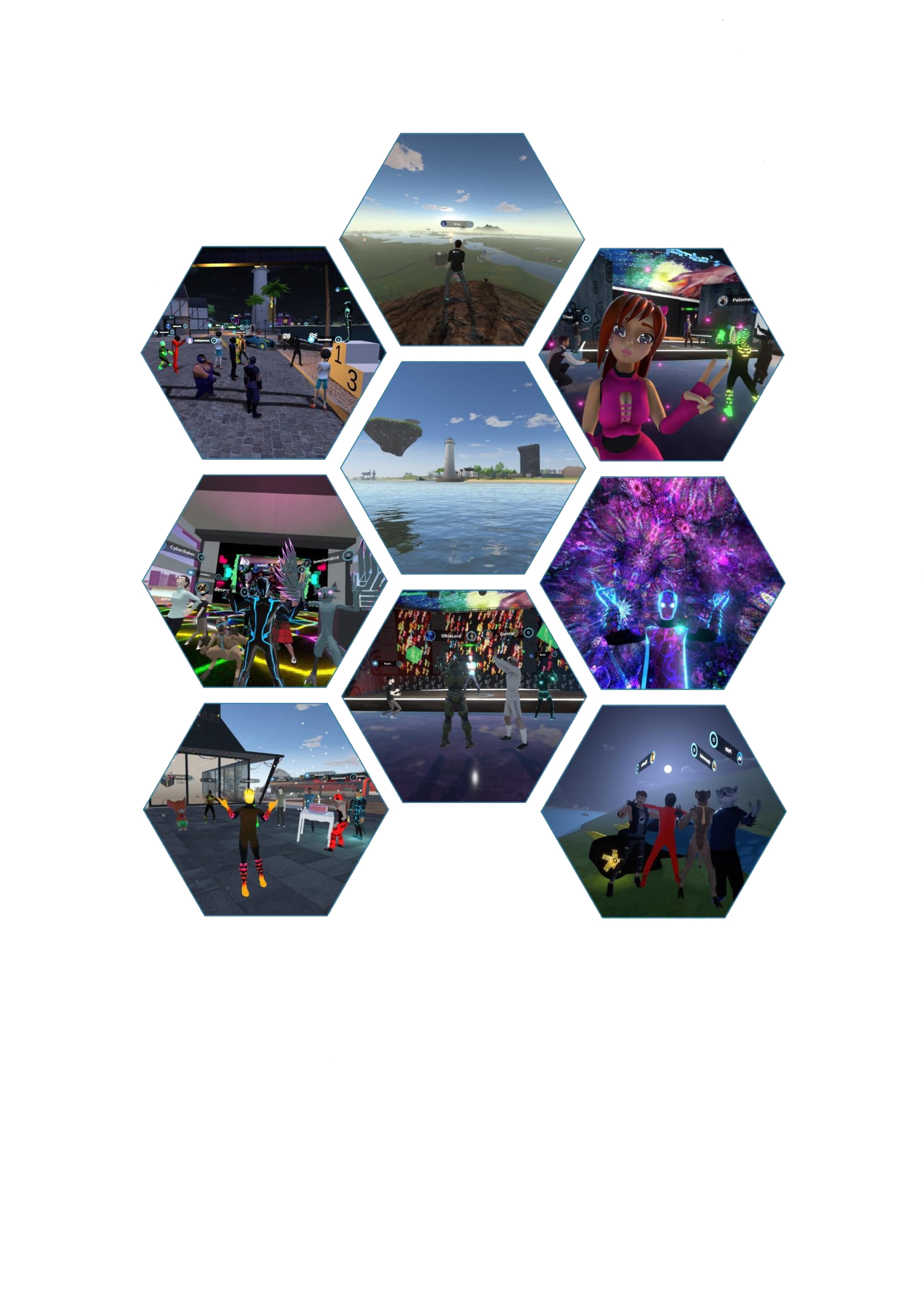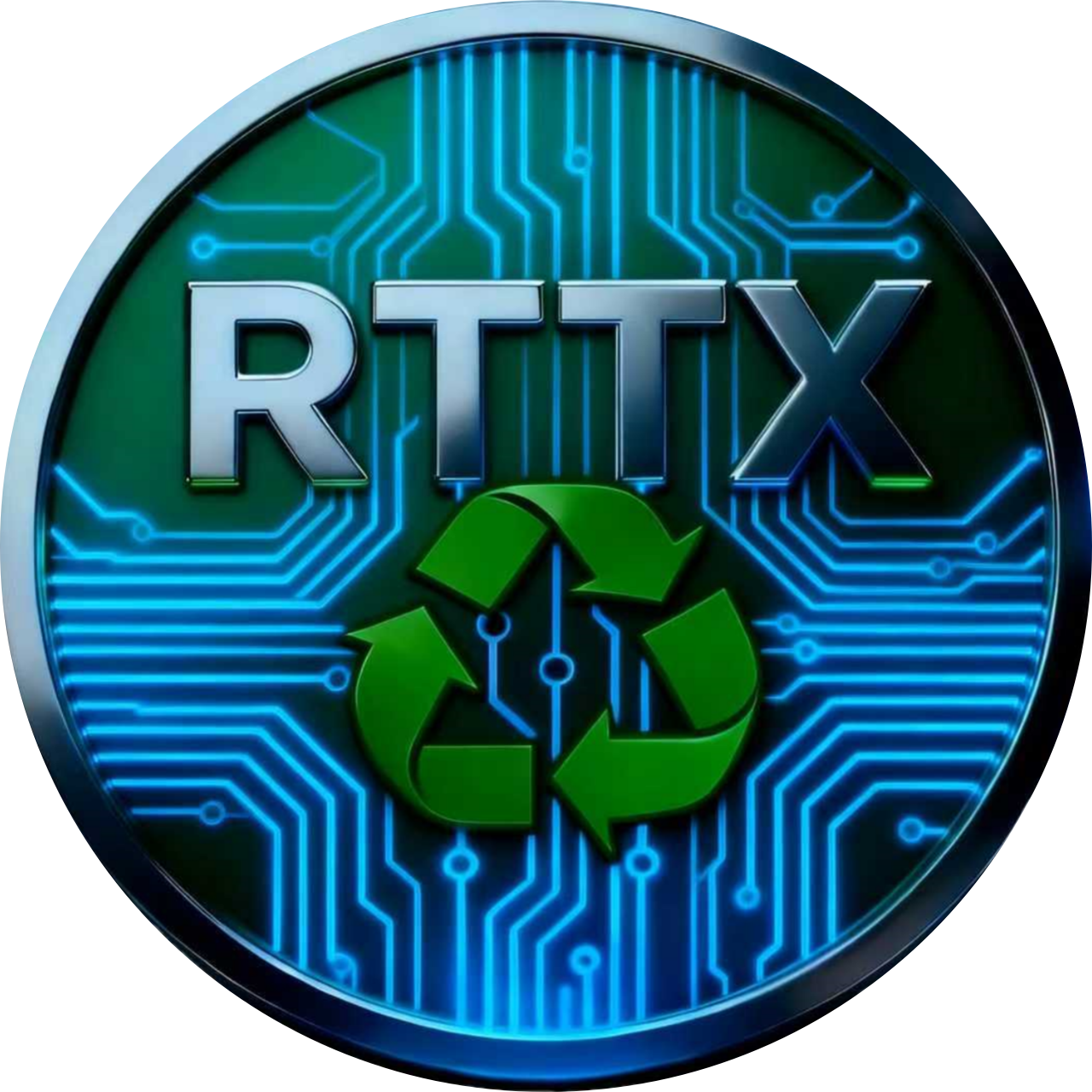
The core of the project is to build an efficient and collaborative value network platform, which will involve all participants in the agricultural waste industry chain - including farmers and farms as the source, recycling enterprises responsible for circulation, processing enterprises for resource conversion, and technical providers offering technical support And the terminal green product consumers and ecological value investors - seamlessly connected into a symbiotic and mutually beneficial closed-loop ecosystem.
RTTX
Deeply integrate artificial intelligence (AI) technology to drive the intelligent upgrade of the entire agricultural waste treatment chain. To achieve a fundamental transformation from extensive management to refined, efficient and intelligent operation in agricultural waste treatment, we have deeply integrated artificial intelligence (AI) technology into the entire business process, creating three core application engines to comprehensively enhance the decision-making efficiency, assessment accuracy and supervision capabilities of the system.
We have abandoned the traditional scheduling mode that relies on human experience and built an intelligent recycling scheduling system based on big data analysis and machine learning. This system collects and aggregates multi-dimensional data such as the generation volume, types, geographical locations and generation cycles of agricultural waste in real time through intelligent terminals deployed in fields, among farmers and enterprises. AI algorithms conduct in-depth mining and trend prediction on these massive amounts of data, accurately outlining the spatio-temporal distribution heat map of regional agricultural waste. Based on this, the system automatically generates the optimal route planning and capacity allocation scheme for recycling vehicles, achieving dynamic matching of vehicles, personnel and recycling points. This not only significantly shortens the transportation time and empty mileage, reduces the recycling cost, but also ensures that agricultural waste can be promptly and efficiently transferred from the source to the treatment center, avoiding secondary pollution.
To address the industry pain points of inconsistent and highly subjective standards for the value assessment of agricultural waste resource utilization, we have developed a multi-dimensional, self-learning AI value assessment model. This model takes a vast amount of historical and real-time data such as the types, physical compositions, chemical properties, moisture content, treatment difficulty coefficients, and fluctuations in market resource product prices of agricultural waste as input, and continuously optimizes the evaluation parameters and weights through deep learning algorithms. The model can automatically, objectively and accurately calculate the resource utilization potential and economic value of each batch of agricultural waste, and use this as the core basis for the distribution of RTTX environmental protection coins. This mechanism ensures the fairness and scientific nature of incentive distribution, allowing every contribution to environmental protection to receive precise value returns.
In the core process of agricultural waste treatment, we integrate the Internet of Things (IoT) with AI vision and sensor data. The entire processing process strictly adheres to environmental protection standards, and the final produced resource products such as biogas, organic fertilizer, and biomass fuel can also stably meet the standards.
We are not confined to a single blockchain solution. Instead, based on the actual needs of business scenarios, we carefully select and may adopt high-performance public chains or consortium chains as the underlying architecture. For example, in the inter-enterprise collaboration scenarios with high requirements for transaction speed and privacy, consortium chain technologies such as Ethereum sidechains or Hyperledger Fabric can be adopted. The transaction processing efficiency can be enhanced through the node authorization mechanism, and commercial sensitive data can be effectively protected. In the links that are oriented towards the public and require maximum decentralization and community participation, the ecological advantages of mainstream public chains can be leveraged. This flexible architecture design aims to ensure that the system can handle high-frequency data interactions and token transactions, while providing bank-level security protection to resist malicious attacks and guarantee the stable operation of the entire ecosystem.
Smart contracts are the core automation engine of our ecosystem. We have written the core business logic such as the agricultural waste recycling agreement, processing standards, value assessment formulas, and RTTX token distribution rules into the smart contract in the form of code and deployed it on the blockchain. Once the preset trigger conditions (such as successful recycling and acceptance of agricultural waste, and the processing process meeting the preset standards) are met, the contract will automatically and irregularly perform the corresponding operations, such as distributing RTTX tokens to the participants and recording the processing completion status, etc. This mechanism completely eliminates the reliance on third-party intermediaries, avoids human intervention and moral hazard, ensures the transparency, standardization and rigid enforcement of all rules, and realizes a trust-less environment where "code is law".
To address the issues of data silos, susceptibility to tampering, and difficulty in traceability in the traditional agricultural waste treatment industry, we have implemented a chain-based storage of key data throughout the entire life cycle of agricultural waste, from its generation to resource utilization. Specifically, it includes: agricultural waste generation certificates signed by farmers or enterprises, GPS trajectories and weighing records of recycling vehicles, real-time operation parameters and processing reports of the treatment plant area, and quality reports of resource outputs issued by third-party testing institutions, etc. Once these data are put on the chain, they acquire the characteristics of being timestamped and unalterable, forming a complete, clear and traceable data chain. Any authorized party, whether regulatory authorities, ecosystem participants or the public, can access and verify the authenticity of the data at any time, which greatly enhances regulatory efficiency, simplifies the auditing process, and provides solid data support for product traceability.
Token name:RTTX
Total issuance: 151.557 billion

RTTX Environmental Coin's diverse application scenarios: Building a closed-loop ecosystem of "behavior - value - governance"
RTTX Environmental Token is not merely an incentive token, but a core value carrier and functional token that runs through the entire ecosystem. We have meticulously designed a diverse range of application scenarios, aiming to create a complete closed loop integrating incentives, consumption and governance, endowing RTTX with genuine and sustainable intrinsic value.
This is an excellent application scenario, using blockchain technology to solve the trust and traceability problems in agricultural waste treatment.
In simple terms, the core of this statement is to leverage the immutability and transparency of blockchain to affix an unchewable "timestamp" to each step of agricultural waste treatment.
How does blockchain technology achieve full-process traceability of agricultural waste treatment

Starting from the source of agricultural waste generation, information such as the time, location, type and quantity of generation will be recorded in real time and uploaded to the blockchain.
Each key node in the entire processing chain, such as collection, transportation, storage, resource utilization or harmless treatment, will be recorded. These records include the operator, time, processing method, equipment parameters, etc.
All the data on the blockchain is publicly visible to the authorizing party. Government regulatory authorities, enterprise partners and even consumers can check it at any time, avoiding information asymmetry.
Once problems are identified, such as non-compliance in the handling process or unknown whereabouts of the products, the specific links and responsible persons can be quickly traced through blockchain records. This has greatly enhanced the efficiency of supervision and the accuracy of accountability.
Our core team is a diverse elite group that brings together the world's top technical experts, senior financial executives, serial entrepreneurs and academic authorities. Not only do they have decades of profound accumulation and brilliant achievements in their respective fields, but they also share a common vision and profound insights into the integration of blockchain technology and the real economy.
 Dr. Jeff is a top technical expert and manager with a Ph.D. in Electrical Engineering from Washington University in St. Louis. His career began at Freescale Semiconductor, where he served as a system architect and led the development of the LG Electronics Broadband Remote Access Router (BRAS-40) switching architecture chipset for South Korea's telecom network, demonstrating outstanding technical leadership.
Subsequently, he joined Huawei Technologies Co., LTD. 's Wireless Access Laboratory in the United States as a principle scientist and senior engineer, serving as the architect of the base station SoC network chip program. This program was successfully integrated into the chip design, laying a solid technical foundation for Huawei's wireless business. During his tenure at Broadcom, he held key positions in the corporate transformation business department, further deepening his influence in the communications and semiconductor industries.
Dr. Jeff brings his profound technical accumulation in chip design, wireless communication and system architecture, along with a global perspective, to RTTX. He is responsible for the company's overall strategic planning and technology roadmap, ensuring the project's technological leadership and commercial feasibility.
Dr. Jeff is a top technical expert and manager with a Ph.D. in Electrical Engineering from Washington University in St. Louis. His career began at Freescale Semiconductor, where he served as a system architect and led the development of the LG Electronics Broadband Remote Access Router (BRAS-40) switching architecture chipset for South Korea's telecom network, demonstrating outstanding technical leadership.
Subsequently, he joined Huawei Technologies Co., LTD. 's Wireless Access Laboratory in the United States as a principle scientist and senior engineer, serving as the architect of the base station SoC network chip program. This program was successfully integrated into the chip design, laying a solid technical foundation for Huawei's wireless business. During his tenure at Broadcom, he held key positions in the corporate transformation business department, further deepening his influence in the communications and semiconductor industries.
Dr. Jeff brings his profound technical accumulation in chip design, wireless communication and system architecture, along with a global perspective, to RTTX. He is responsible for the company's overall strategic planning and technology roadmap, ensuring the project's technological leadership and commercial feasibility.
 Alex is a senior expert with over 10 years of experience in fintech and large-scale system architecture. His career highlights include founding and serving as the director of the Institute of Information Technology (ITI) under the National Computer Board (NCB) of Singapore, during which he promoted the cutting-edge development of information technology research and innovation in Singapore.
He also served as the Chief Information Officer of the National Computer Board of Singapore and the National Project Manager for the 9001 Information Technology certification, making outstanding contributions to Singapore's digital transformation. In addition, he single-handedly established the Singapore-Israel Industrial Research and Development Fund (SIIRD), demonstrating outstanding capabilities in resource integration and international cooperation.
Alex has held key positions in financial institutions such as Russian banks and has a profound understanding of the security, stability and compliance of the financial system. He will bring financial-grade technical architecture design and security guarantees to RTTX to ensure the stable operation of the ecosystem.
Alex is a senior expert with over 10 years of experience in fintech and large-scale system architecture. His career highlights include founding and serving as the director of the Institute of Information Technology (ITI) under the National Computer Board (NCB) of Singapore, during which he promoted the cutting-edge development of information technology research and innovation in Singapore.
He also served as the Chief Information Officer of the National Computer Board of Singapore and the National Project Manager for the 9001 Information Technology certification, making outstanding contributions to Singapore's digital transformation. In addition, he single-handedly established the Singapore-Israel Industrial Research and Development Fund (SIIRD), demonstrating outstanding capabilities in resource integration and international cooperation.
Alex has held key positions in financial institutions such as Russian banks and has a profound understanding of the security, stability and compliance of the financial system. He will bring financial-grade technical architecture design and security guarantees to RTTX to ensure the stable operation of the ecosystem.
 Hofbauer is a technical veteran with over 15 years of software development experience and an early explorer and practitioner of blockchain technology. He has an extremely in-depth understanding of the underlying technologies of blockchain, especially being proficient in the theoretical systems, consensus mechanisms and code implementations of mainstream projects such as Ethereum and Interplanetary File System (IPFS).
His technical expertise covers full-stack development from underlying protocols to upper-layer applications, enabling him to accurately grasp the development trends and core pain points of blockchain technology. In the RTTX project, Hofbauer will be responsible for the design and optimization of the underlying architecture of the blockchain, ensuring that the system has high performance, high security and high scalability, providing the most solid technical foundation for the decentralized operation of the entire ecosystem.
Hofbauer is a technical veteran with over 15 years of software development experience and an early explorer and practitioner of blockchain technology. He has an extremely in-depth understanding of the underlying technologies of blockchain, especially being proficient in the theoretical systems, consensus mechanisms and code implementations of mainstream projects such as Ethereum and Interplanetary File System (IPFS).
His technical expertise covers full-stack development from underlying protocols to upper-layer applications, enabling him to accurately grasp the development trends and core pain points of blockchain technology. In the RTTX project, Hofbauer will be responsible for the design and optimization of the underlying architecture of the blockchain, ensuring that the system has high performance, high security and high scalability, providing the most solid technical foundation for the decentralized operation of the entire ecosystem.